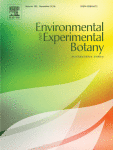Ver ítem
- xmlui.general.dspace_homeCentros e Institutos de InvestigaciónCIAP. Centro de Investigaciones AgropecuariasInstituto de Fisiología y Recursos Genéticos VegetalesArtículos científicosxmlui.ArtifactBrowser.ItemViewer.trail
- Inicio
- Centros e Institutos de Investigación
- CIAP. Centro de Investigaciones Agropecuarias
- Instituto de Fisiología y Recursos Genéticos Vegetales
- Artículos científicos
- Ver ítem
Heat and water stressed field-grown soybean : a multivariate study on the relationship between physiological-biochemical traits and yield
Resumen
Heat stress (HS) combined with water stress (WS) negatively impact soybean [Glycine max (L.) Merr.] production. The aims of this research were to quantify the combined effect of HS and WS during grain filling (GF) on grain yield, and to identify physiological-biochemical traits strongly associated to crop performance and yield determination processes under these stressful field environments. Two soybean cultivars were exposed during GF to ambient
[ver mas...]
Heat stress (HS) combined with water stress (WS) negatively impact soybean [Glycine max (L.) Merr.] production. The aims of this research were to quantify the combined effect of HS and WS during grain filling (GF) on grain yield, and to identify physiological-biochemical traits strongly associated to crop performance and yield determination processes under these stressful field environments. Two soybean cultivars were exposed during GF to ambient temperature or to HS (>32 °C for 6 h per d) during 21 d; and to field capacity or to WS (20% of available soil water content) during 35 d. Yield, grain number and weight (GN and GW) were significantly reduced under HS combined with WS. In irrigated HS yield and GN were also reduced, albeit final GW was similar to that of control, highlighting compensation mechanisms. Chlorophyll fluorescence analysis indicated that detrimental effects of HS and WS on photosynthesis were via structural capacity aspects but also through damage to photosystem II. The HS × WS decreased the availability of assimilate to grains, but also impaired the sink-grain metabolization of the remobilized products from leaves. A multivariate analysis highlighted strong correlations between quantum efficiency of photosystem II photochemistry, chlorophyll content (SPAD value), and the antioxidant state of leaves, which were all positively correlated with yield. Canopy temperature throughout grain filling (CTGF) was negatively associated with GN and GW, the latter also positively associated with SPAD. Explaining these physiological traits 81, 50, and 82% of the total variability of yield, GN and GW, respectively. To our knowledge this is the first report that integrating different scales of study, demonstrates the potential of physiological-biochemical parameters to explain yield variations in field-grown soybean under HS and WS conditions.
[Cerrar]

Autor
Ergo, Verónica Vanesa;
Lascano, Hernan Ramiro;
Vega, Claudia Rosa Cecilia;
Parola, Rodrigo;
Carrera, Constanza Soledad;
Fuente
Environmental and experimental botany 148 : 1-11. (April 2018)
Fecha
2018-04
Editorial
Elsevier
ISSN
0098-8472
Formato
pdf
Tipo de documento
artículo
Palabras Claves
Derechos de acceso
Restringido
 Excepto donde se diga explicitamente, este item se publica bajo la siguiente descripción: Creative Commons Attribution-NonCommercial-ShareAlike 2.5 Unported (CC BY-NC-SA 2.5)
Excepto donde se diga explicitamente, este item se publica bajo la siguiente descripción: Creative Commons Attribution-NonCommercial-ShareAlike 2.5 Unported (CC BY-NC-SA 2.5)

